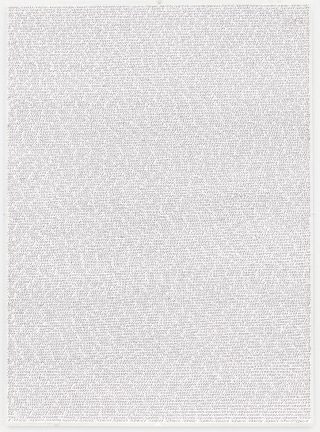ROMAN OPALKA (1931 - 2011)
Roman Opałka was born in 1931, to Polish émigrés in France. He and his family returned to Poland in 1935, only to be deported to Germany after the Nazi invasion. After the country was liberated by the United States Army in 1945, they moved back to Poland, where the artist studied lithography before enrolling in the School of Art and Design in Łódź. Opałka later earned a degree from the Academy of Fine Arts in Warsaw and began experimenting with abstract and monochrome paintings, which he called Chronomes (1959–63).
In 1965, he began his 1965/1 – ∞ project, to which he would devote the majority of his life’s work. In his studio in Warsaw, Roman Opalka began painting a process of counting—from one to infinity. Starting in the top left-hand corner of the canvas and finishing in the bottom right-hand corner, the tiny numbers are painted in horizontal rows. Each new canvas, which the artist calls a “detail,” takes up counting where the last left off. Each “detail” is the same size (196 x 135 cm), the dimensions of his studio door. All details have the same title: 1965 / 1 – ∞, as the artist has pledged his life to its execution: “All my work is a single thing, the description from number one to infinity. A single thing, a single life.”
Over the years, there have been some changes to the ritual. In Opalka’s first details, he painted white numbers onto a black background. In 1968, he changed to a grey background “because it’s not a symbolic color, nor an emotional one,” and in 1972, he decided he would gradually lighten this grey background by adding one percent more white to the ground with each passing detail. He expects to be painting virtually in white on white by the time he reaches 7,777,777, about a decade away at the current rate: “My objective is to get up to the white on white and still be alive. The process is endless, but measured against its goal—infinity—it is as naught: the problem is that we are, and are about not to be. My death is the logical and emotional proof of the completion of my work.’ Roman Opalka
